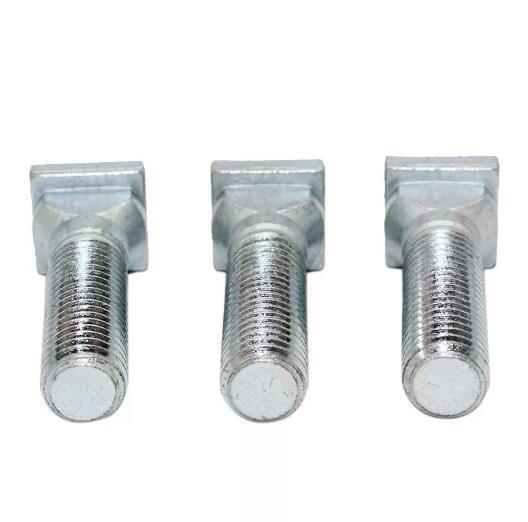Unveiling the Corrosion-Resistant Marvel: The Composition of Stainless Steel T Bolts
2023-12-18
Introduction:
Stainless steel T bolts are essential fasteners known for their durability and corrosion resistance. The secret to their remarkable performance lies in their unique composition. In this blog, we'll delve into the primary composition of stainless steel T bolts and explore how each element contributes to their impressive corrosion resistance.
Understanding Stainless Steel T Bolts Composition:
Stainless steel T bolts are typically made from a family of iron-based alloys known as stainless steel. The key elements that make up this alloy and contribute to its corrosion-resistant properties include:
1. Iron (Fe):
The base metal of stainless steel T bolts is iron. The addition of iron provides structural integrity and strength, forming the foundation for the alloy.
2. Chromium (Cr):
Chromium is a crucial element that sets stainless steel apart. It forms a protective oxide layer on the surface of the T bolts, acting as a barrier against corrosive elements like water and air. The minimum chromium content required for stainless steel classification is usually around 10.5%.
3. Nickel (Ni):
Nickel enhances the corrosion resistance of stainless steel and contributes to its overall strength. It also plays a role in maintaining the stability of the austenitic structure, especially in high-temperature environments.
4. Molybdenum (Mo):
Some stainless steel T bolts may contain molybdenum, which further improves their corrosion resistance, especially in chloride-rich environments. This makes them suitable for applications where exposure to saltwater or harsh chemicals is common.
5. Carbon (C):
The carbon content in stainless steel T bolts is typically kept low to prevent carbide precipitation, which could compromise corrosion resistance. Low carbon levels also contribute to the bolts' weldability.
6. Other Alloying Elements:
Depending on the specific grade of stainless steel, other alloying elements such as manganese, silicon, and nitrogen may be present, each contributing to various properties like strength, hardness, and corrosion resistance.
Corrosion Resistance Mechanism:
The corrosion resistance of stainless steel T bolts is primarily attributed to the formation of a passive oxide layer on the surface. When exposed to oxygen in the air or water, chromium in the alloy reacts to create a thin, invisible film. This oxide layer acts as a shield, preventing further oxidation and corrosion.
Applications and Considerations:
Stainless steel T bolts find applications in diverse industries, including marine, construction, and manufacturing, where corrosion resistance is paramount. When selecting these bolts, factors such as the environment, temperature, and specific grade of stainless steel must be considered to ensure optimal performance.
Conclusion:
Stainless steel T bolts stand out as corrosion-resistant marvels due to their carefully crafted composition. The synergy of iron, chromium, nickel, and other alloying elements creates a formidable alloy that can withstand the test of time in challenging environments. As we continue to rely on these fasteners in various industries, understanding their composition sheds light on the science behind their enduring strength and resilience against corrosion.



